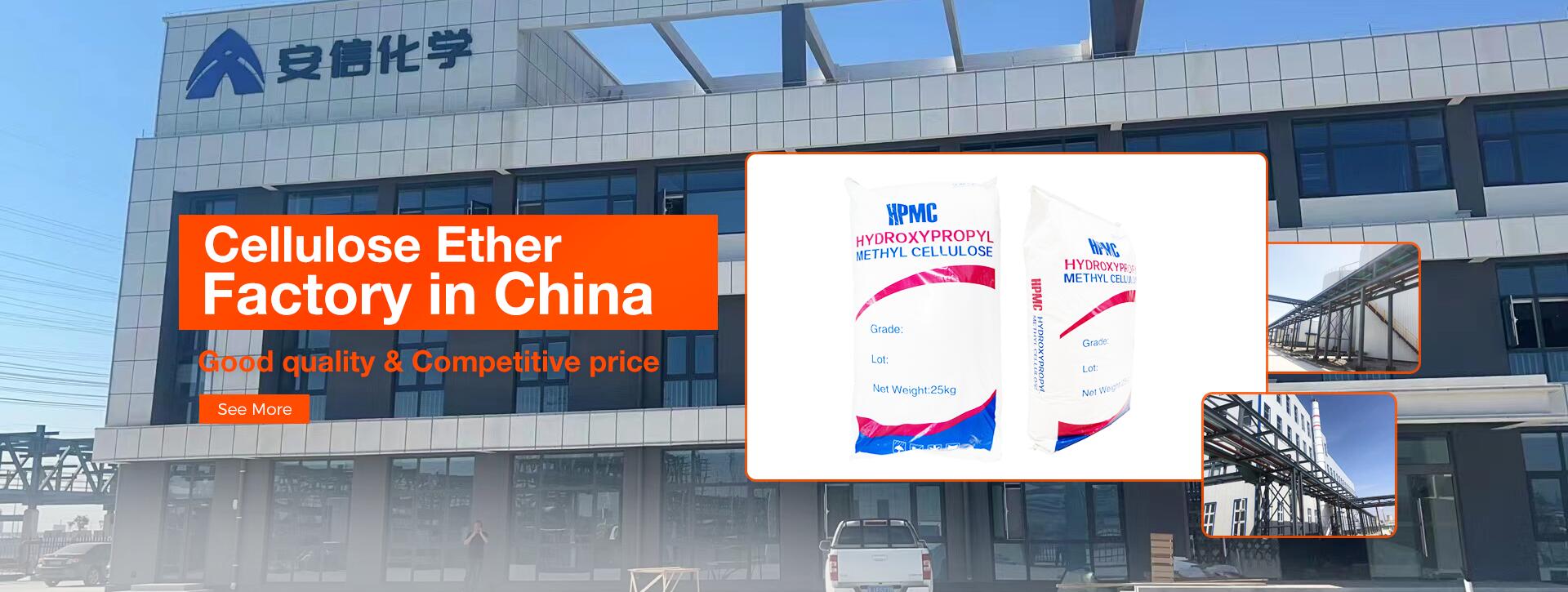Thickening effect of cellulose ether
Cellulose ethers are a group of versatile polymers widely used in various industries for their thickening properties. Beginning with an introduction to cellulose ethers and their structural properties, this paper delves into the mechanisms behind their thickening effect, elucidating how interactions with water molecules lead to viscosity enhancement. Various types of cellulose ethers are discussed, including methyl cellulose, hydroxyethyl cellulose, hydroxypropyl cellulose, and carboxymethyl cellulose, each with unique thickening characteristics. the applications of cellulose ethers in industries such as construction, pharmaceuticals, food, cosmetics, and personal care, highlighting their indispensable role in product formulation and manufacturing processes. Finally, the significance of cellulose ethers in modern industrial practices is emphasized, along with future prospects and potential advancements in cellulose ether technology.
Cellulose ethers represent a class of polymers derived from cellulose, a ubiquitous biopolymer abundantly found in plant cell walls. With unique physicochemical properties, cellulose ethers are widely utilized in various industries, primarily for their thickening effect. The ability of cellulose ethers to increase viscosity and improve rheological properties makes them indispensable in numerous applications ranging from construction materials to pharmaceutical formulations.
1.Structural Properties of Cellulose Ethers
Before delving into the thickening effect of cellulose ethers, it is essential to understand their structural properties. Cellulose ethers are synthesized through chemical modification of cellulose, primarily involving etherification reactions. The hydroxyl groups (-OH) present in the cellulose backbone undergo substitution reactions with ether groups (-OR), where R represents various substituents. This substitution leads to alterations in the molecular structure and properties of cellulose, imparting distinct characteristics to cellulose ethers.
The structural modifications in cellulose ethers influence their solubility, rheological behavior, and thickening properties. The degree of substitution (DS), which refers to the average number of substituted hydroxyl groups per anhydroglucose unit, plays a crucial role in determining the properties of cellulose ethers. Higher DS generally correlates with increased solubility and thickening efficiency.
2.Mechanisms of Thickening Effect
The thickening effect exhibited by cellulose ethers stems from their interactions with water molecules. When dispersed in water, cellulose ethers undergo hydration, wherein water molecules form hydrogen bonds with the ether oxygen atoms and hydroxyl groups of the polymer chains. This hydration process leads to the swelling of cellulose ether particles and the formation of a three-dimensional network structure within the aqueous medium.
The entanglement of hydrated cellulose ether chains and the formation of hydrogen bonds between polymer molecules contribute to viscosity enhancement. Additionally, the electrostatic repulsion between negatively charged ether groups further aids in thickening by preventing close packing of polymer chains and promoting dispersion in the solvent.
The rheological behavior of cellulose ether solutions is influenced by factors such as polymer concentration, degree of substitution, molecular weight, and temperature. At low concentrations, cellulose ether solutions exhibit Newtonian behavior, whereas at higher concentrations, they display pseudoplastic or shear-thinning behavior due to the disruption of polymer entanglements under shear stress.
3.Types of Cellulose Ethers
Cellulose ethers encompass a diverse range of derivatives, each offering specific thickening properties suitable for various applications. Some commonly used types of cellulose ethers include:
Methyl Cellulose (MC): Methyl cellulose is obtained by etherification of cellulose with methyl groups. It is soluble in cold water and forms transparent, viscous solutions. MC exhibits excellent water retention properties and is commonly used as a thickener in construction materials, coatings, and food products.
Hydroxyethyl Cellulose (HEC): Hydroxyethyl cellulose is synthesi
zed by introducing hydroxyethyl groups onto the cellulose backbone. It is soluble in both cold and hot water and exhibits pseudoplastic behavior. HEC is widely used in pharmaceutical formulations, personal care products, and as a thickener in latex paints.
Hydroxypropyl Cellulose (HPC): Hydroxypropyl cellulose is prepared by etherification of cellulose with hydroxypropyl groups. It is soluble in a wide range of solvents, including water, alcohol, and organic solvents. HPC is commonly employed as a thickener, binder, and film-forming agent in pharmaceuticals, cosmetics, and coatings.
Carboxymethyl Cellulose (CMC): Carboxymethyl cellulose is produced by carboxymethylation of cellulose with chloroacetic acid or its sodium salt. It is highly soluble in water and forms viscous solutions with excellent pseudoplastic behavior. CMC finds extensive applications in food products, pharmaceuticals, textiles, and paper manufacturing.
These cellulose ethers exhibit distinct thickening properties, solubility characteristics, and compatibility with other ingredients, making them suitable for diverse applications across industries.
4.Applications of Cellulose Ethers
The versatile thickening properties of cellulose ethers render them indispensable in various industrial applications. Some key applications of cellulose ethers include:
Construction Materials: Cellulose ethers are widely used as additives in cement-based materials such as mortar, grout, and plaster to improve workability, water retention, and adhesion. They act as rheology modifiers, preventing segregation and enhancing the performance of construction products.
Pharmaceuticals: Cellulose ethers find extensive applications in pharmaceutical formulations as binders, disintegrants, and thickening agents in tablets, capsules, suspensions, and ophthalmic solutions. They improve the flow properties of powders, facilitate tablet compression, and control the release of active ingredients.
Food Products: Cellulose ethers are commonly employed as thickening, stabilizing, and gelling agents in a wide range of food products, including sauces, dressings, desserts, and dairy products. They enhance texture, viscosity, and mouthfeel while improving shelf stability and preventing syneresis.
Cosmetics and Personal Care: Cellulose ethers are utilized in cosmetics and personal care products such as creams, lotions, shampoos, and toothpaste as thickeners, emulsifiers, and film-forming agents. They impart desirable rheological properties, enhance product stability, and provide a smooth, luxurious texture.
Paints and Coatings: Cellulose ethers serve as rheology modifiers in paints, coatings, and adhesives, improving viscosity control, sag resistance, and film formation. They contribute to the stability of formulations, prevent pigment settling, and enhance application properties.
The thickening effect of cellulose ethers plays a crucial role in various industrial processes and product formulations. Their unique rheological properties, compatibility with other ingredients, and biodegradability make them preferred choices for manufacturers across diverse sectors. As industries continue to prioritize sustainability and eco-friendly solutions, the demand for cellulose ethers is expected to rise further.
Post time: Apr-02-2024
